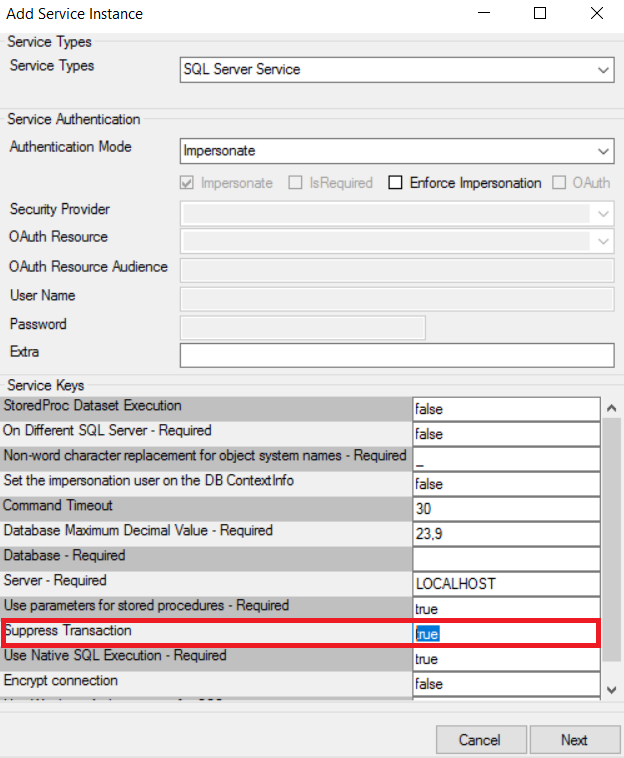Transaction count after EXECUTE indicates a mismatching number of BEGIN and COMMIT statements
kbt146542
PRODUCTIssue
When executing a SmartObject method that in turn executes an SQL Stored Procedure, the SmartObject returns the following error:
"Transaction count after EXECUTE indicates a mismatching number of BEGIN and COMMIT statements. Previous count = 1, current count = 0."

Symptoms
- This error only occurs after applying 4.7 November 2017 CU, or any CUs that were released after November 2017.
- On 4.7 without any CU and FP applied, you may get an SQL transaction has completed; it is no longer usable error.
- Stored procedure has nested transactions.
- Stored procedure contains RAISERROR. Removing the RAISERROR in the stored procedure allows the SmartObject to be executed without any errors.
Troubleshooting Steps
- Edit your SQL Server service instance.
- Set Suppress Transaction to true.

- Update the service instance.
- Refresh the SmartObject, and test the SmartObject again. The error should go away.
Please read more here for more information on Suppress Transaction.


